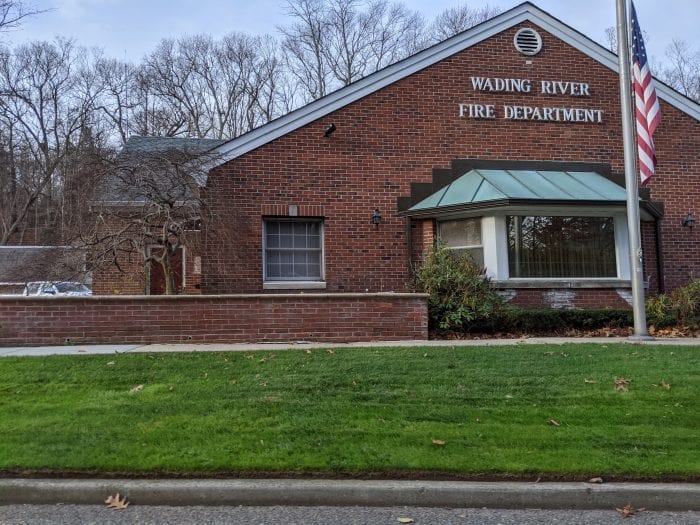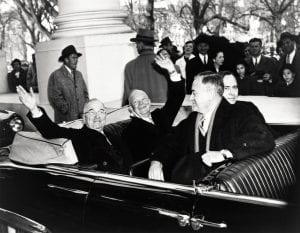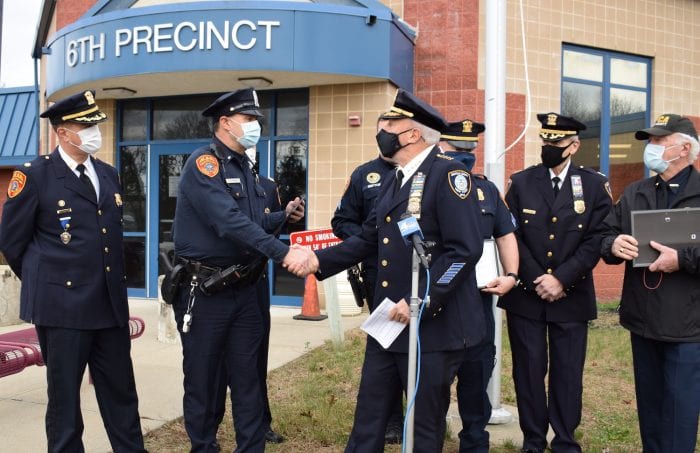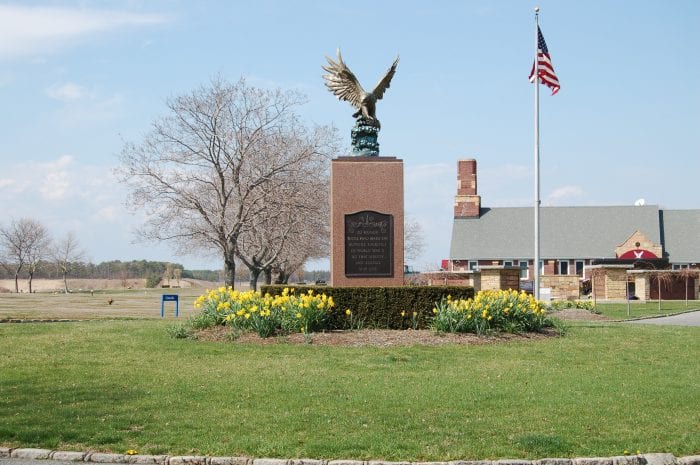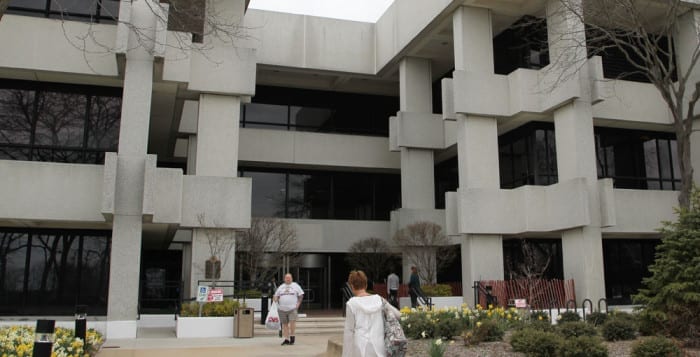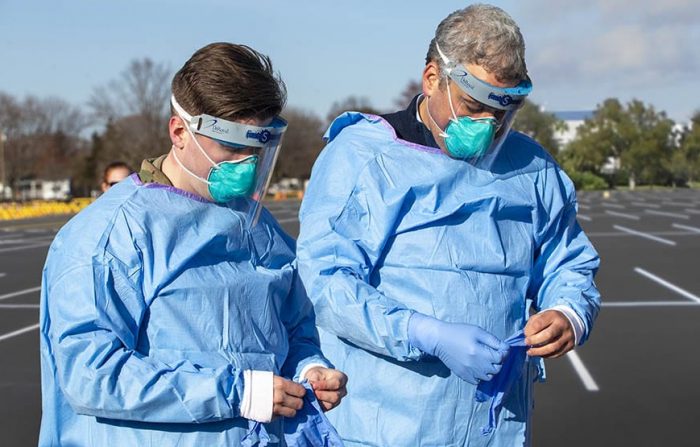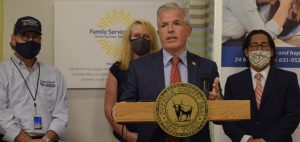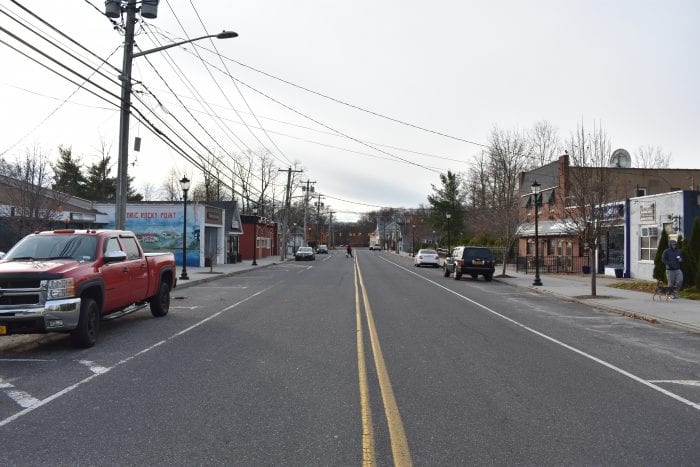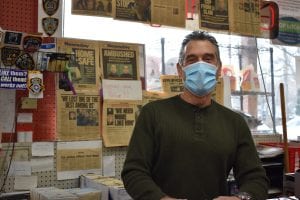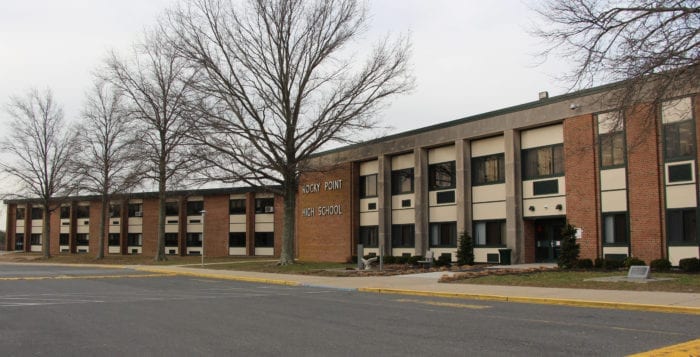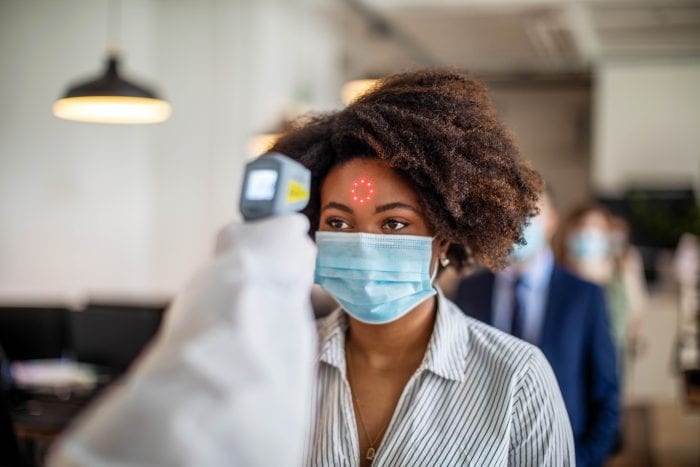Local fire departments are gearing up for their annual commissioner elections, and most districts in the local area, save Wading River, are looking at uncontested races.
Commissioners are unpaid elected board members who run the district, which is a connected but distinct entity from the fire department. The district is a taxing entity whose board is elected by the residents in the district. The commissioners determine yearly budgets, go out for grants and propose bonds to maintain equipment and personnel of both the district and department.
TBR News Media reached out to the local fire departments to talk to the commissioner candidates. Candidates talked about how COVID-19 has caused budgetary concerns, and along with current ongoing projects, how they try to recruit new members during a time of a pandemic.
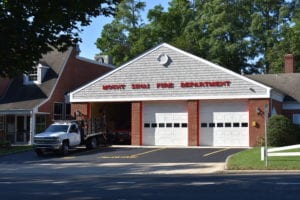
Mount Sinai Fire District
The Mount Sinai Fire District is holding an election Dec. 8 for a five-year commissioner seat. Incumbent Joseph Tacopina is running uncontested for a seat he’s held since 2002.
Tacopina said in a phone interview he has been with the Mount Sinai Fire Department for 35 years. Since he’s been commissioner, he said the board has worked to keep the percentage yearly tax increase below the New York State tax cap. Still, the district’s five-year plan does not include any big-ticket items, he said, and instead focuses on things like replacing the boiler in the main firehouse and other capital improvements.
“We’ve been streamlining processes through the department, but there are budgetary constraints based on COVID, so some of the projects we were looking to do are minimal in scope,” he said.
The pandemic has brought forth a host of new costs to the district, things that they previously wouldn’t have had to pay for. Tacopina said there were costs associated with sanitizing the firehouse and firefighter equipment, and they have had to spend much more on cleaning supplies and other PPE. At certain points, the district had to close the building to nonessential service for small time periods because of positive infections among volunteers or staff. It has also made recruitment for volunteer-starved departments like Mount Sinai that much harder.
“All these additional costs are not budgeted — we have to spend on sanitizing equipment so we can have our members respond without infecting everybody,” he said.
The election is set for Dec. 8 at the main firehouse located at 746 Mount Sinai-Coram Road from 6 to 9 p.m. The district is also asking residents to vote on a proposition that would make it so an active member can become a participant of the service award program at age 17, instead of 18. The annual cost of the program would increase from $265,200, or $2,160 per participant, to $288,400, or $2,060 per participant.
Tacopina said the district is attempting to allow younger people in their youth programs to become active members sooner to allow them earlier access to firefighter training. Currently young members must turn 18 before joining such training, which usually only allows them a small period for which to train and then work on trucks. Doing this would allow firefighter training for the summer before, so once they turn 18 they’re already ready to become full-fledged members.
“This way before they go to college, we have them for that summer as well,” the commissioner said.
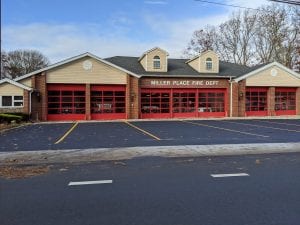
Miller Place Fire District
Miller Place has one commissioner term up for election. Incumbent commissioner Larry Fischer is seeking another five-year term starting Jan. 1 next year.
Fischer, a 31-year member of the department, has served five terms on the board of fire commissioners. It’s been a long road, though the ongoing pandemic has led to a host of new challenges.
He said the department has been mostly shut down for all non-call and emergency response activities. The department has had to greatly limit the number of training sessions, which along with limitations at fire school, has limited the availability of new recruits to get the training they need.
Still, the important thing, Fischer said, is that they’re still answering calls, which even before the pandemic, close to 70% of calls were for EMS. Like other districts, the pandemic has put an added cost on the district from having to purchase PPE and sanitizing equipment. Just this past week, the department hosted both rapid and the three-day COVID-19 tests for department members.
“We want to make sure our members are safe, especially our EMTs” he said. “I salute the EMTs who are really on the front lines of this.”
Within the past year or so, the district updated their 20-year-old phone system. Though they had applied for a grant in 2019, the department ended up having to pay out of pocket, and that equipment was finally delivered at the beginning of this year.
Though the commissioner is hope for a return to something resembling normal next spring and summer following the release of a vaccine, that will not be the end to issues in the area. He shared his concern for the ongoing opioid crisis, which data has shown has only been accentuated because of the pandemic. He hopes that they can be allowed to go back in schools sometime in the near future to provide some training and awareness for students related to opioids.
The election is held at the main firehouse at 12 Miller Place Road Dec. 8 from 4 to 9 p.m.

Sound Beach Fire District
The Sound Beach Fire District is hosting its election for a five-year commissioner seat. Incumbent Richard McKay is running for his seat unopposed.
McKay was appointed three years ago to finish the term of a previous commissioner who vacated his position. With several decades of experience as both a firefighter and EMT, he previously served as a commissioner for another department and said he originally did not expect to be elected again.
“I told them I’ll try it out for the year, but we did really well — all the commissioners play nicely in the sandbox — so now I’m running for a full term,” he said.
He said the main purpose of the district and commissioners is to maintain service without putting the onus on taxpayers. Last year Sound Beach residents voted to approve a $2.9 million bond to complete repairs and work at the main firehouse that hasn’t seen work in years. Most of the work is repairs and maintenance, McKay said. Repairs and fixes include a makeover of the parking lot, new epoxy floor finishing in the ambulance bays and apparatus room, sprinkler and fire alarm system replacements and window replacements on both floors.
“The floors inside the firehouse are crumbling and in one part of the building a wall has a crack in it,” he said. “Almost every window leaks.”
While the district has made budgets that have gone under the state tax cap for the past several years, this is the first time they will pierce the tax cap due to paying off the bond.
The other big issue the district faces is a lack of volunteers, McKay said. It’s especially hard nowadays to get people to dedicate the necessary amount of time for both training and to be on call.
The election is set for Dec. 8 at the firehouse located at 152 Sound Beach Blvd. from 2 to 9 p.m.
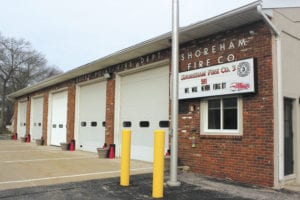
Rocky Point Fire District
Rocky Point is hosting its election Dec. 8 to elect a commissioner to a five-year term. Incumbent commissioner John Buchner is running unopposed.
Buchner did not respond to a request for an interview by press time.
The election is set for Dec. 8 at the district building at the Shoreham firehouse, located at 49 Route 25A, between 3 and 9 p.m.
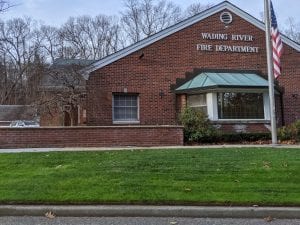
Wading River Fire District
Wading River remains one of the few contested elections for commissioner this year. The seat is for a five-year term starting Jan. 1, 2021, and ending Dec. 31, 2025.
Incumbent commissioner of 15 years Jim Meier is facing off against previous commissioner Tim Deveny.
Meier, a third-generation firefighter and 41-year member of the department, said he is running again to continue the work they are doing in upgrading equipment and boost declining membership. He also boasted there have been no reported cases of COVID-19 in the department, meaning they have maintained a continuity of service throughout the pandemic.
“It’s all about the safety and the financial end,” he said. “We have a board that’s working together well right now.”
He said the district has purchased two ambulances and a new ladder truck in the last two years using capital funds without having to rely on other financial institutions. He also boasted about other grants the district has received in the past several years, including a $200,000 grant for radio systems in 2015.
“With all that saving we can purchase new rigs to keep us going,” he said.
The station 2 firehouse on Hulse Landing Road has been closed for nearly two years now, saying the chief of department originally closed it for mold issues, among other building problems, and they “haven’t been able to reopen it.” That building is now being used for storage, save for a single emergency vehicle, while apparatus and equipment that was housed there has been moved to the main firehouse along North Country Road. Members that used to report to the second firehouse now respond to the main one.
The biggest issue, Meier said, is a lack of enough volunteers to man that station. He said despite additional travel time for some members to get to the station, the move has actually improved response time, as with a single alarm, instead of people responding to two separate houses, more people are available right next to the necessary equipment.
“Most people from that end [of Wading River] were getting older or moving out,” Meier said. “As bad as it is to have the station closed, it’s helped our response time.”
Deveny, a 23-year member and past commissioner from 2004 to 2014, said he is running again because of the issue with the station 2 firehouse, which he said was a major disruption in service to the eastern portion of the Wading River hamlet.
“Public safety — that’s what it’s all about,” Deveny said. “In this day and age when EMS calls are escalating, you take away from the people on the east end?”
He disagreed with the current board saying there are not enough volunteers to staff the station 2 building, saying that as he has worked there, they had 16 people who responded there and were “locked out” in February of last year. He said problems such as the mold issue have already been rectified, and some volunteers taking the trek to the main firehouse has meant a drive time of 10 minutes or more. He added people on his side of town “still don’t know they closed that station down.”
“I’m so angry I can eat glass,” he said. “You can’t put a price on human life.”
The candidate also criticized the district for piercing the state tax cap two years in a row, saying the district needs to work on its financial situation. He said the department did not require a ladder truck when other nearby departments could provide such equipment in a pinch, adding there were no large houses in Wading River that would require that apparatus.
The election is set for the main firehouse located at 1503 N. Country Road, Dec. 8 between 2 and 9 p.m.

